
Engines are built to fall within a wide set of standards and specifications, often not optimized to meet the original design. In short, cheap and fast engine production results in a sloppy final product. Of course, this is not idea for high-performance engines. To maximize the performance of any engine, it must be balanced and blueprinted to the exact tolerances that the factory should have adhered to in the first place. Four cylinder, V-8, American or import, the performance of all engines is greatly improved by balancing and blueprinting. Dedicated enthusiasts and professional racers balance and blueprint their engines because the engines will produce more horsepower and torque, more efficiently use fuel, run cooler and last longer.
In this book, expert engine builder and veteran author Mike Mavrigian explains and illustrates the most discriminating engine building techniques, so the engine is perfectly balanced, matched, and optimized. Balancing and blueprinting is a time consuming and exacting process, but the investment in time pays off with superior performance. Through the process, you carefully measure, adjust, machine and fit each part together with precision tolerances, optimizing the design and maximizing performance. The book covers the block, crankshaft, connecting rods, pistons, cylinder heads, intake manifolds, camshaft, measuring tools and final assembly techniques.
For more than 50 years, balancing and blueprinting has been an accepted and common practice for maximizing performance. An enthusiast or professional that invests the time to precisely build an engine in this fashion will be rewarded with an engine that will run strong and last for years. This book provides an unprecedented level of detail and instruction on the process of balancing and blueprinting your engine.
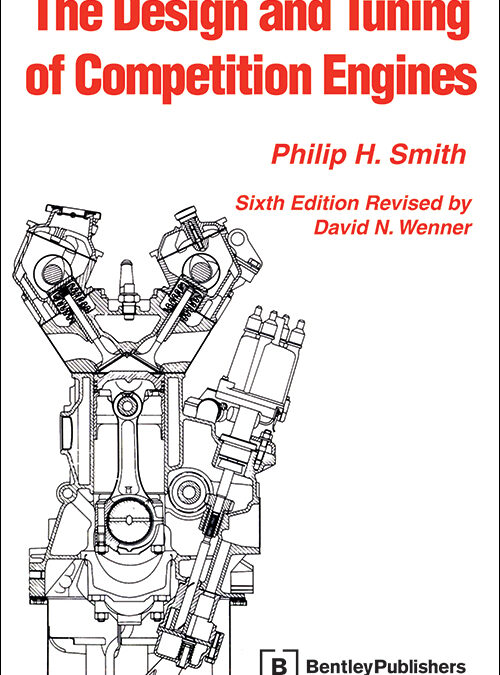
No other book gives you better insight into the expert preparation of engines for racing and high-performance road use, whether your interest lies in street, oval track, drag, or stock car racing. The first chapters explain the fundamentals that govern high-performance engines: thermodynamic laws, gasflow, mechanical efficiency, and engine materials and construction. Understanding these basic factors is crucial to making correct decisions when tuning or modifying your engine.
Actual engine preparation techniques are described in the middle section, including cylinder head work and balancing and blueprinting. The final part of the book focuses on modifying specific engines: American V8s, Porsche 911, Volkswagen Air-cooled and Water-cooled, Cosworth BDA, Formula Ford 1600, Datsun 4- and 6-cylinder, and Mazda rotary engines. You’ll learn proven techniques to increase performance and reliability, and, just as important, which modifications won’t give you meaningful gains.
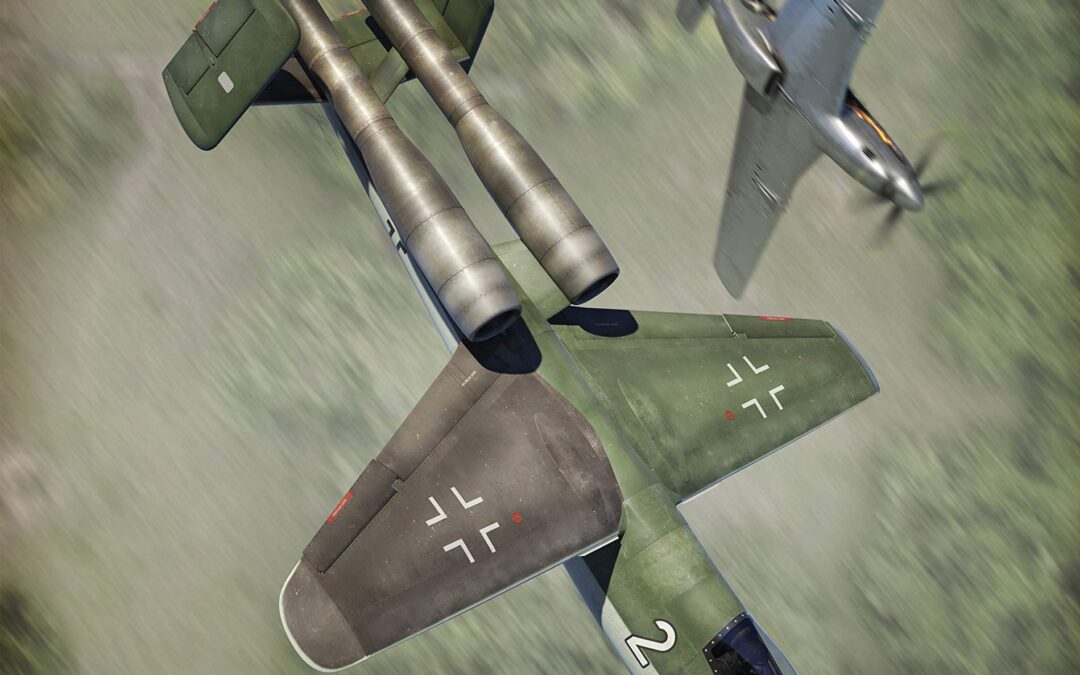
Heinkel’s single-jet He 162 fighter arrived in Luftwaffe service at the very end of the Second World War – but its development can be traced back to the beginning of July 1944. A contest had been set in motion to design a powerful and aerodynamically advanced replacement for Messerschmitt’s twin-jet Me 262 and Heinkel believed it could win.
As the competition progressed and Germany’s resources dwindled, it became clear that an advanced jet fighter was not what the Luftwaffe needed. A new concept was formulated: a cheap, basic fighter equipped with a single readily-available turbojet. The advanced fighter contest was temporarily shelved and Volksjäger was born.
Swept metal wings, V-tail and HeS 011 engine swapped for straight wooden wings, conventional tail and BMW 003 engine, Heinkel’s fighter design was rushed through a brief selection process before Adolf Hitler himself placed an order for 1,000 a month. A massive effort saw the He 162 go from blueprints to flying prototype in less than two months. But was it a triumph of engineering prowess or a costly white elephant which hastened the end of the war? Using contemporary documents, author Dan Sharp explains and explores the development history of this fascinating and controversial late-war ‘secret project’.
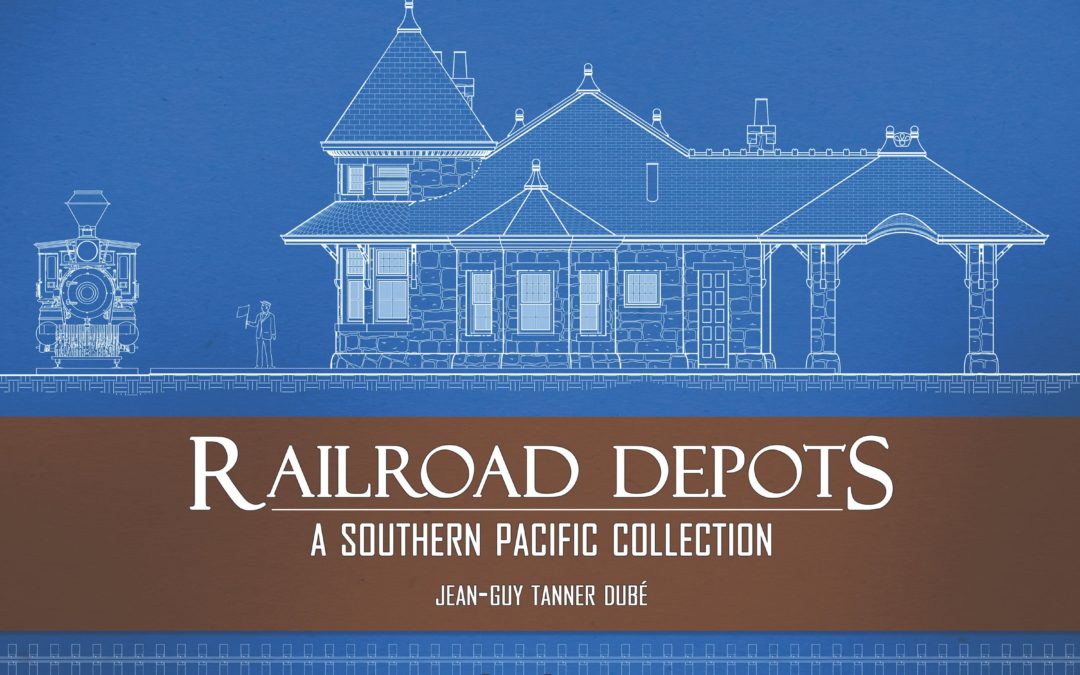
Awarded the national Leicester B. Holland Prize for 2017 by the National Park Service and Library of Congress, professional draftsman and apprenticing architect Jean-Guy Dubé has researched and written about Southern Pacific depots since 1983. This book features 48 black and white blueprint drawings by Dubé, spanning many decades, styles and subject matter. Each blueprint, from the first tape measurement to the finished product took several months to complete. This is the first compilation of his drawings. While his work primarily includes standard and unique depots, this book also includes a handful of individual railroad built buildings and a few non-railroad buildings.
Each blueprint includes noted floor plans, elevations, some sections, and has an accompanying history. For a few, there are some previously unpublished black and white historical photos, and others come from various historical societies, museums, individuals and as well as the author.
This book is a wonderful representation of some of Dube’s drafting and research over the years. The book is 9″x 12″ landscape color laminated softcover, blueprint end papers, 116 pages. Contains 48 black and white blueprints and 33 black and white photos.
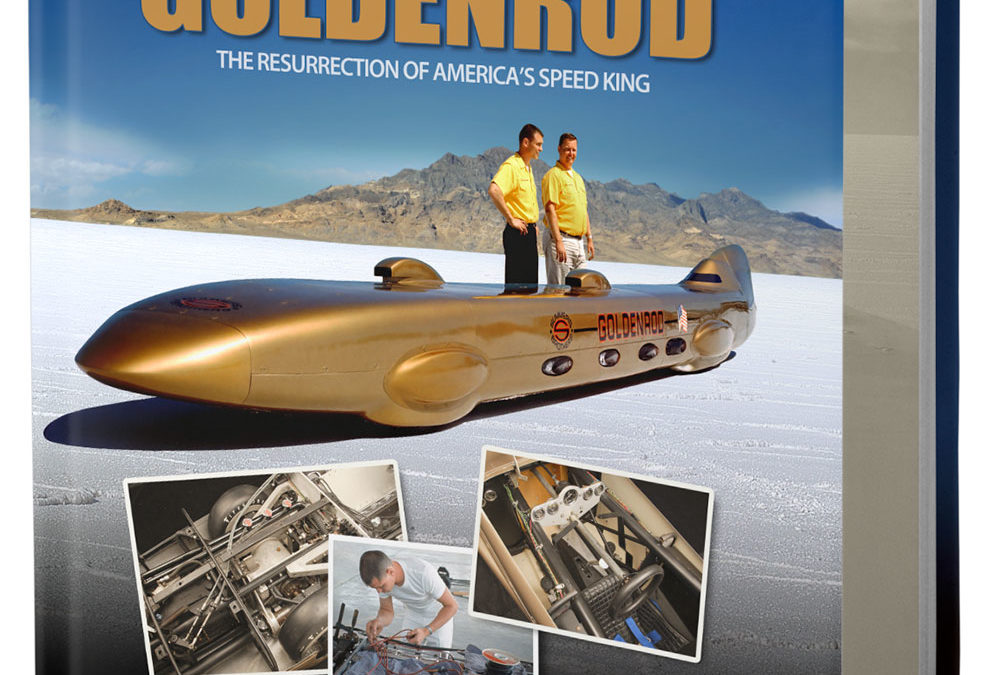
The Definitive History of GOLDENROD – America’s Iconic Land Speed Record Holder
Discover the REAL Story of this Land Speed Legend and Its Restoration..
A full color 300-page collector’s quality hardcover book celebrating the restoration and world record setting achievements of an authentic American legend.
Record Breaking Secrets Revealed
Unseen Original Plans & Blueprints
Full Color Teardown & Rebuild Photos
Full Aerodynamic Development Details
Inside the Chrysler Race Hemi Engines
Official FIA Record Documentation
Veteran Author and 200 MPH Club Member John Baechtel has written a full color, photo-rich book on the restoration and detailed history of the car.
It includes full coverage of the restoration effort, rare family photos, original plans and blueprints, Walter Korff’s complete aerodynamic development report, a special section on the modified Chrysler Race Hemi engines, the air scoop controversy, plus a detailed timeline of the record attempt.
No effort has been spared to produce this hardbound collector’s quality account of the Goldenrod and the Summers Brothers’ stunning land speed record achievement.
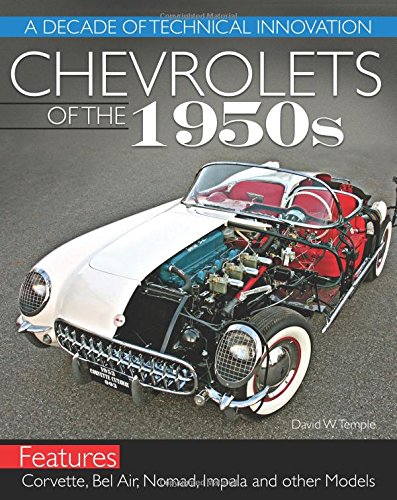
As the 1950s dawned, General Motors focused its industrial might on producing revolutionary rather than evolutionary cars with the ultimate goal to become the clear market leader in the automotive industry. To accomplish this goal, the company designed, developed, and consistently released innovative automotive technology. During the decade, Chevrolet introduced the small-block V-8, the Powerglide automatic transmission, air-conditioning, power steering, and many other innovations that made the cars faster, more comfortable, and safer.
All of the pieces had fallen into place. General Motors had astute leadership, a brilliant engineering team, forward-thinking stylists, a massive manufacturing infrastructure, and the capability to produce cutting-edge technology. With unbridled optimism and exuberance to meet the demands of the booming U.S. economy of the 1950s, the company designed, developed, and delivered an unprecedented number of breakthrough technologies, and established the blueprint for the modern automobile.
Automotive historian and veteran author David Temple goes behind the scenes to reveal how these technologies were designed, manufactured, and installed on Chevrolet’s fine portfolio of cars: the Corvette, 1955-1957 Bel Air, Nomad, Impala, and many more. Inside General Motors, many dedicated and talented leaders who were determined to make Chevrolet cars the best on the market. Vice President of Styling Harley Earl and his team designed the 1953 Corvette concept car for the Motorama show. After receiving numerous accolades, it was rushed into production. Design chief Harley Earl used his design acumen and creative vision as he led his team to style the 1955-1957 Bel-Air. Zora Arkus-Duntov worked tirelessly and transformed the Corvette from a touring car into a genuine sports car. Ed Cole and his engineers overcame many challenges to develop the compact, efficient, and powerful Chevy small-block V-8, which continued in production for decades.
Chevrolets of the 1950s retraces the design, development, and production of these cars, but it also covers innovative vital components that were installed in them. If you have been looking for the inside story on GM’s arguably greatest decade, the models, and the technology it produced, you have found it.

From Ross Brawn—one of the most successful figures in Formula One auto racing—comes a compelling insider’s account of what it takes to win, featuring practical advice for overcoming obstacles and becoming a champion both on and off the racetrack.
Formula One racing is a wildly popular global sport with millions of fans and billions more engineering dollars at stake. For four decades, Ross Brawn has been one of the most innovative technical directors and team principals in the high-stakes world of Formula One. He is considered the most successful competitor in the history of Formula One to date, and “the closest thing there is to a certifiable genius” (The Wall Street Journal). Leading Benetton, Ferrari, Honda, and Mercedes, he has worked with legendary drivers such as Michael Schumacher, Jenson Button, and Lewis Hamilton to make them Grand Prix champions. Now, in this fascinating book, presented as a frank conversation between Brawn and fellow Formula One competitor Adam Parr, Brawn reflects upon his career, shares the philosophies and methods that led to his success, and offers lessons that every leader working with teams—at work, play, or home—can use to achieve their own goals, too.
Brawn and Parr share details about the unique pressures of Formula One racing and the intense, cutthroat world they inhabited, where coming in second place is never good enough. Just as Phil Knight recounted his accomplishments and devastating setbacks in the building of the Nike brand in the New York Times bestseller Shoe Dog, this book also provides a blueprint for leading teams, imparting lessons such as “Embrace Humility,” “Invest in People and Culture,” “Strive for Simplicity, Manage Complexity,” and much more.
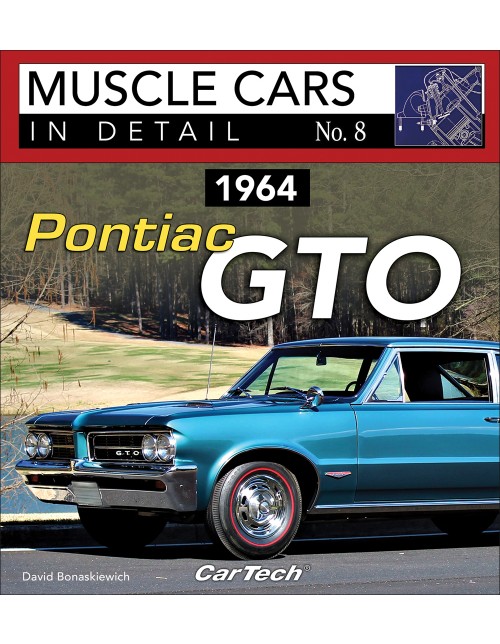
By the mid-1960s, the American automotive market was yearning for faster, more responsive, and sportier cars, and a crew of high-performance enthusiasts at Pontiac recognized this. Large V-8s were commonly installed in full-size cars, but performance was hampered by pure chassis weight. Under the guidance of Bunkie Knudsen, John DeLorean, Bill Collins, and others, Pontiac installed the high-performance 389 V-8 into the nimble and lightweight intermediate-size LeMans chassis. It was a watershed moment for Pontiac; the 1964 GTO delivered astounding performance and created the muscle car blueprint that the Detroit manufacturers followed in the 1960s and 1970s.
This volume in the Muscle Cars In Detail Series delivers a comprehensive review of this trend-setting and historic car. The GTO housed a 389 V-8 engine with a single Carter AFB 4-barrel carburetor, and along with dual exhaust and a standard 3-speed or optional 4-speed manual transmission, it supplied extraordinary performance. To improve traction and handling, the GTO was fitted with stiffer springs, larger-diameter front sway bar, and wider wheels. And to give it panache, the GTO was adorned with distinctive badges and hood scoops. The 1964 GTO is a landmark car, and this book goes well beyond the glossy overview of other books about this car.
All In Detail Series books include an introduction and historical overview, an explanation of the design and concepts involved in creating the car, a look at marketing and promotion, and an in-depth study of all hardware and available options, as well as an examination of where the car is on the market today. Also included is an appendix of paint and option codes, VIN and build-tag decoders, as well as production numbers.
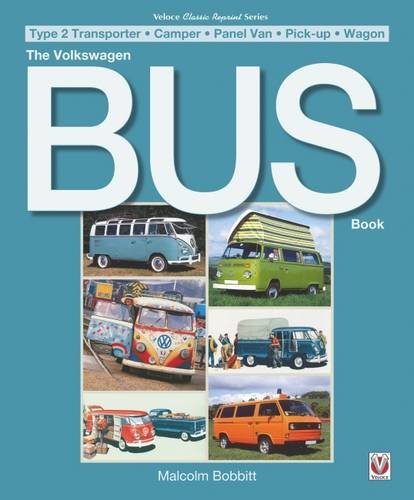
This is the story of VW’s timeless classic, the Type 2 Transporter, universally known as the “Bus”. It is sixty years since the idea of VW’s Transporter was conceived by Dutchman Ben Pon after seeing motorized trollies conveying components around the British-managed Wolfsburg factory in the mid-1940s. With blueprints complete by November 1948, the “Bulli” as it was known in Germany went into production a year later. The 100,000th Transporter was built in October 1954, the millionth in 1961 and the 3 millionth in 1971, the total number of vehicles exceeding 6.5 million. The Transporter changed little in concept throughout decades of production, and remained in production in Brazil until very recently, nearly six decades after its postwar German debut.
Researched in incredible detail, this book explores the story of the VW bus, from early origins through to the present day. This entirely new edition includes details of many of the different camper conversions, and examines the social history and the T2’s evolution. Including full specifications, production figures and buying advice, this totally reworked classic is an interesting, highly informative read and a must for any VW enthusiast.
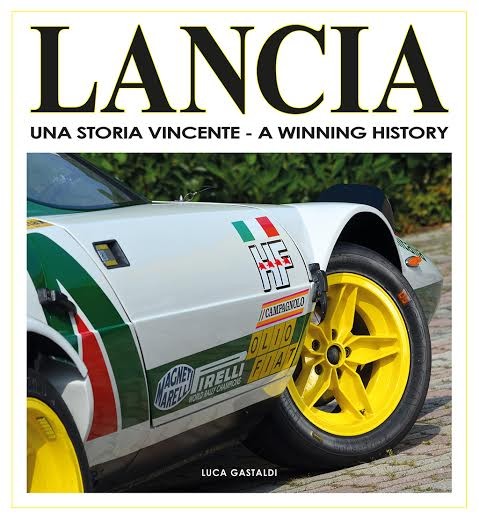
Lancia – Una storia vincente/A winning history
is a book dedicated to the racing history of the famous Italian brand.
The Lancia adventure in motorsport begins in the first decades of 1900, when some independent drivers choose the Vincenzo Lancia’s cars to brave the most important races of that pioneering era.
Later, after the death of Vincenzo, his son Giovanni decides to increase the racing activities. The Lancia official racing team born at the beginning of the 1950s. They debut at the 1951 Mille Miglia race, which was officially entered by two Aurelia B20 Gts especially setup for this long Italian race.
Secondly, in 1952, Vittorio Jano was given the task of designing a new sportscar. The D20 debuted at the 1953 Mille Miglia and it won the Targa Florio. From the D20 derived the D23, then D24 that exploited the technology available at the time in the best way.
D24 meant the end of the Lancia sportscar programme, for on 18th October 1954 the company announced its retirement from sportscar racing in order to pursue its ambitious project in Formula 1.
The single-seater which took Lancia into the highest category of motor-racing was extremely advanced for its time. It was called D50 and debuted at the 1954 Spanish Grand Prix in Barcelona, the last round of the Championship.
On 26th May 1955, Gianni Lancia was in shock for the loss of his driver Alberto Ascari, dead in Monza: a tragedy that made him withdraw from racing completely and almost immediately. At the time Ferrari was in grave difficulties and Lancia decided to donate its D50s, spares, equipments and blueprints to the Cavallino. Vittorio Jano himself moved to Maranello in order to develop the D50s to allow them to enter the 1956 season.
Nearly ten years would pass before Lancia approached racing once more. The racing versions of the Aurelia and Appia cars were the main choice for gentlemen drivers who raced both on track and road. During the Sixties, the HF Squadra Corse racing team was founded: initially a private venture only flanked by Lancia, with the birth of the Fulvia Coupé (1965) it was officially incorporated by the firm and managed by Cesare Fiorio.
It was the birth of a new era, a decade of success achieved by the Fulvia and the Stratos. From Formula 1 in the Fifties, Lancia decided to move to the International and World Rally Championships between the Sixties and Seventies. And finally in the Eighties and until the beginning of the Nineties with the 037, Delta S4, Delta 4WD and Delta Integrale models.

BUILDING THE PRO STOCK LATE MODEL SPORTSMAN MANUAL – INCLUDES: Chassis Set-up, For dirt & Asphalt Tracks, Stock front stub modifications, Flat vs banked track set-ups, Adjusting the car at the track.
————————-
A complete step-by-step build up of a low cost chassis and car for the pro stock/sportsman rules. Uses a 1970-81 stock Camaro front stub with a fabricated perimeter frame. Steve Smith designed the chassis and furnishes blueprints in the book for building it. He discusses at every step the reason for component choice and how suspension theory was put into practice. Full of helpful tips and professional tricks. For dirt and asphalt tracks Stock front stub modifications Complete chassis set-up Flat vs banked track set-ups Adjusting the car at the track Rear suspension systems that hook up
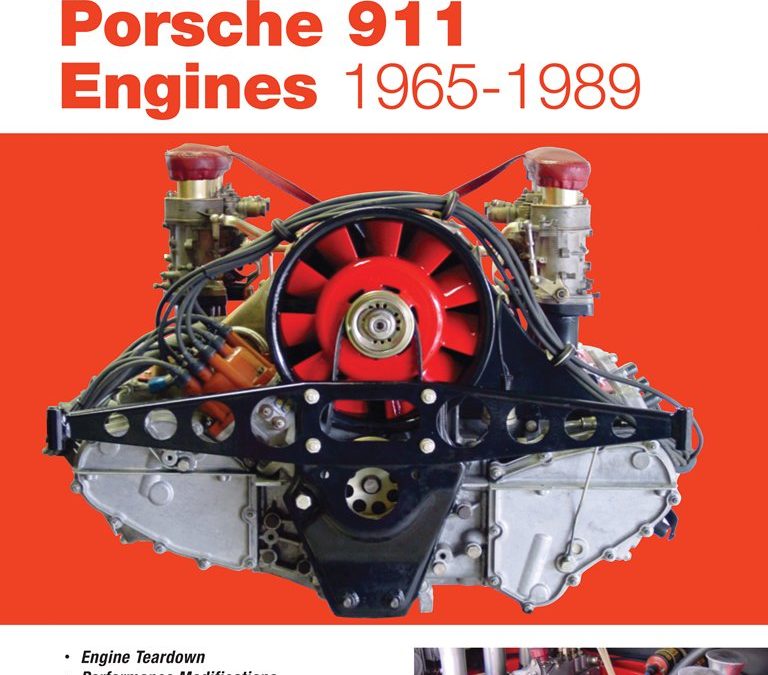
Never-before published information details the nuances of tackling this daunting task! From dropping the engine, to reconditioning and blueprinting, through final reinstallation and break-in, Dempsey guides you step-by-step through the pitfalls often experienced by even the best mechanics.
Contains reliable information on parts interchange, performance modifications, reliability upgrades, tear down, and potential problems encountered along the way. Essential information for do-it-yourselfers and for those looking to hire a professional.
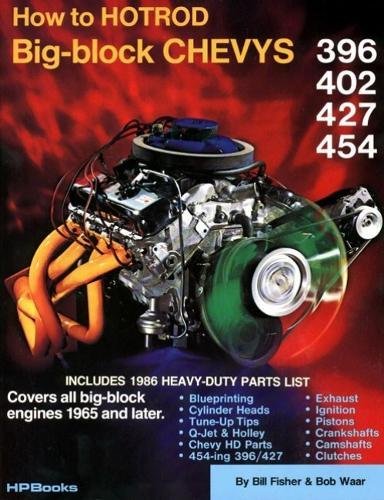
HP Books’ How to Hotrod Big-Block Chevys guide covers all big block engines from 1965 on and how to modify Chevy 396/402/427/454 engines for superb acceleration and top speed. It also covers blueprinting, cylinder heads, tuning tips, Q-Jet and Holley carburetors, Chevy HD parts, 454-ing 396/427, headers, clearances, torque specs, pistons, manifolds, valves, cams, and much, much more! Includes 1986 heavy-duty parts list.
Learn more about blueprinting, cylinder heads, tune-up tips, as well as how to repair exhaust, ignition, pistons, and more!
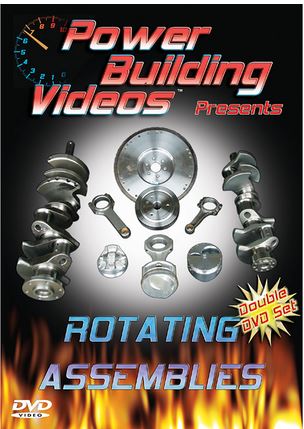
ROTATING ASSEMBLIES – This double-sided DVD contains approximately 3 1/2 hours of highly detailed, yet easy to understand information on how to choose the right parts for your engine before it gets built. You’ll be taken through many types of cranks, rods, pistons, rings, bearings, harmonic balancers, flywheels, balancing, and everything else you can imagine that involves the internal rotating assembly to see the comparisons between them all.
Building an engine is one thing, knowing which internal components to use for a given application, and why you would choose those particular parts is another, and that’s just what you’ll learn in this show. Arron explains the features, advantages and disadvantages of each part, and why you would, or wouldn’t want to use a particular part for your engine, from stock, to street performance, to all-out racing engines.
Should you run a cast, forged or billet crank? What are the differences and how can you tell? Which alloy is the best? Should you increase the stroke or decrease the stroke? Which rods should you go with? I-beam, H-beam, steel or aluminum? What length should you use? What about rod angles and piston side loading? Which pistons should you use? Cast, hypereutectic or forged? Domed, dished or flat tops? Floating or pressed pins? Will you need oil rail supports? Which bearings should you use? Will they hold-up to heavy loads? Do you need cast, moly, plasma moly or gapless rings? What is balancing all about? What’s the difference between internal and external balancing? What does “balanced and blueprinted” mean? Should you use an aluminum or steel flywheel? These questions and MANY, MANY more are answered in this show.
KNOWLEDGE IS HORSEPOWER!
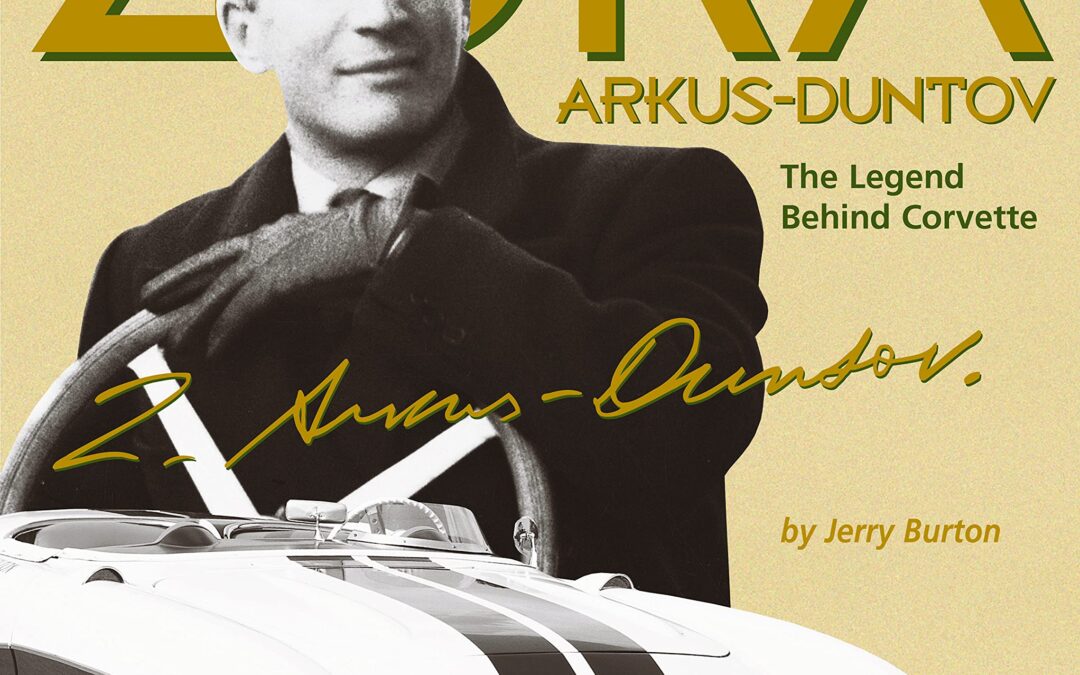
Zora Arkus-Duntov: The Legend Behind Corvette tells the story of how a gifted engineer brought up by Russian Revolutionary parents became the guiding force behind the legendary American sports car, and in the process attained the elite status of American legend himself. Author Jerry Burton, founding editor and current editorial director of Corvette Quarterly, has worked with many of Zora’s friends and colleagues, as well as his widow Elfi, to write the first major biography of Zora Arkus-Duntov. Burton has illustrated his book with hundreds of unpublished photos, blueprints, and archival documents.This book puts Duntov in the perspective needed to understand his achievements as a Russian-Jewish immigrant fighting to make his mark at General Motors.
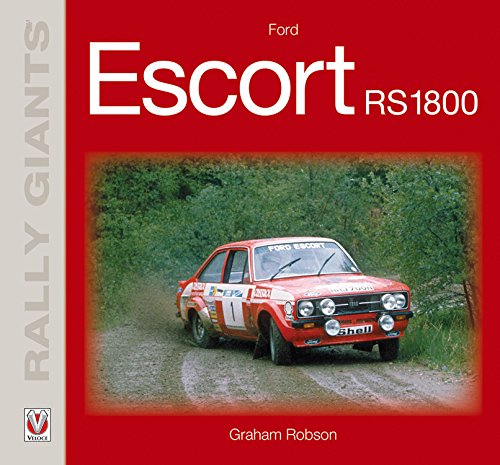
The Ford Escort RS1800 (Escort MkII) was consistently the fastest, most successful, and most versatile car in the second half of the 1970s. Developed from the Mk1 blueprint, its rally successes were legendary; taking victories at British (RAC), Safari, Acropolis, Finland (1000 Lakes), Sweden, Portugal, Canada, and many more.
These rugged, powerful, and efficiently designed cars were ideal for almost any condition any environment could throw at them. Between 1975 and 1981, the car would win 17 World Rallies, as well as the World Makes Championship in 1979 and Escort drivers like Bjorn Waldegard (1979) and Ari Vatanen (1981) won World Drivers’ Championships.
Ford claims, and it may be right, that RS1800s have won more rallies at World, International, and National level than any other car in the world.
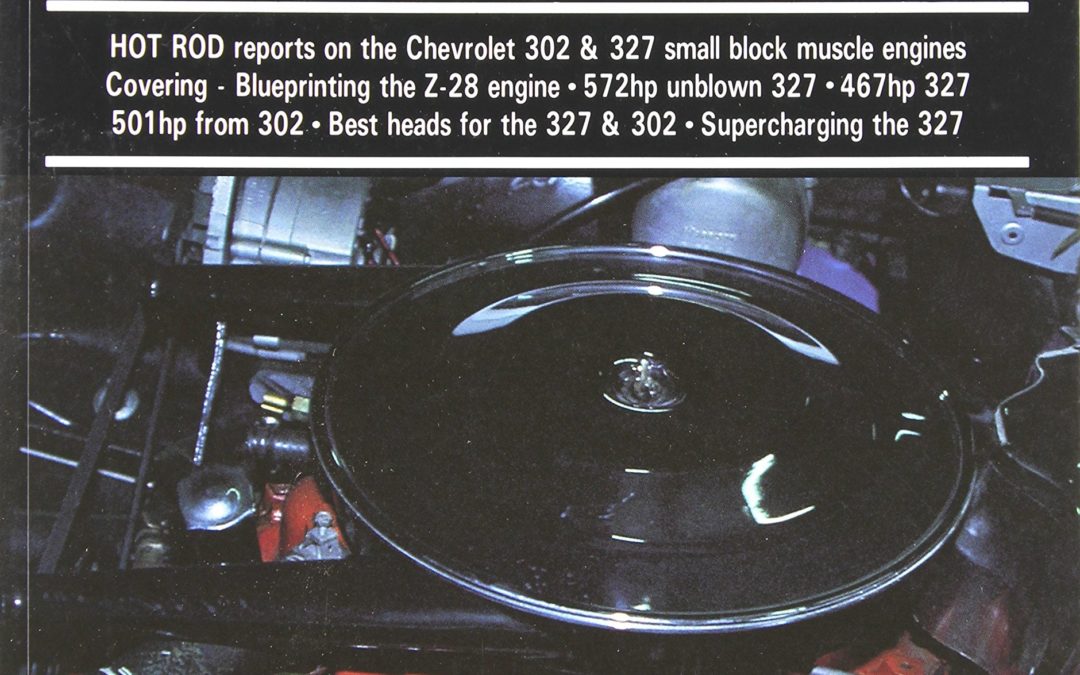
Hot Rod’ reports on the Chevrolet 302 and 327 small block muscle engines. Covering: blueprinting the Z-28 engine, 572hp unblown 327, 467hp 327, 501hp from 302, best heads for the 327 & 302, supercharging the 327.
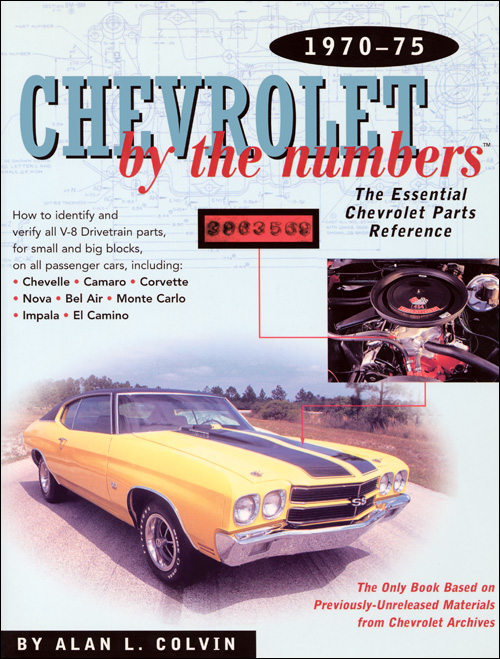
Each volume comprehensively covers parts identification and applications with charts galore, and it’s chock-full of GM archival photos, blueprints, and diagrams. If you want to know what Chevy used which part, this is the place to look.
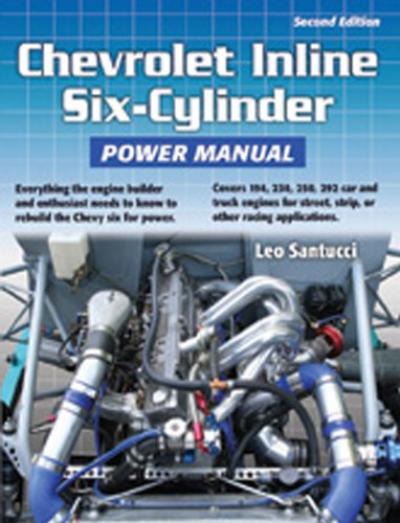
Crammed full of all the things that made the original Chevrolet Inline Six-Cylinder Power Manual the bible for new and experienced six-cylinder engine builders, this updated version is a must-have for any serious inliner. From soup to nuts, when you want to build the Chevy six for more power and torque than the factory could ever imagine, there is only one book the experts turn to. And now the second edition is absolutely jam packed with the latest blueprints, interviews, airflow charts, build sheets, racer and “hot dog” profiles. Thought-provoking ideas will help you build the Chevy six your way!






















